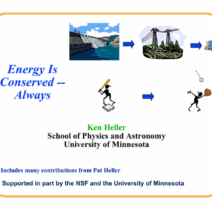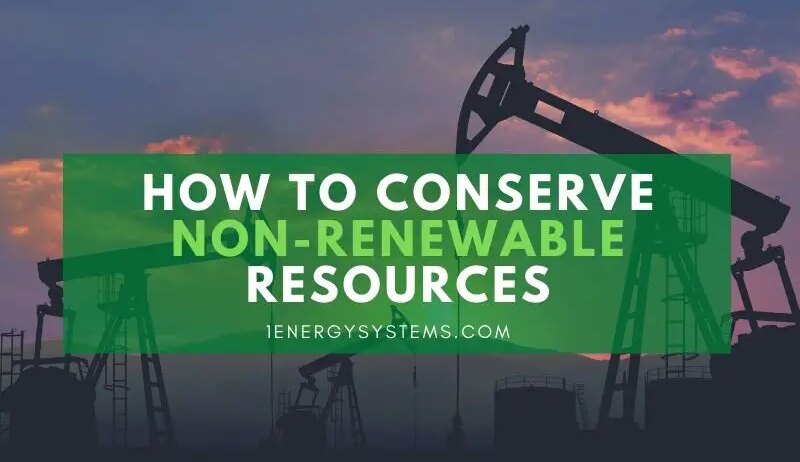As technology advances and society continues to modernize, the predominant reliance on non-renewable energy resources becomes an issue of critical concern. With fossil fuels powering our vehicles, homes, and industries, the alarming depletion of these essential resources necessitates urgent and concerted efforts toward conservation. This discourse delves into the methods and rationale for conserving non-renewable energy resources, advocating for a sustainable future.
To commence, it is imperative to define non-renewable resources. These are energy sources that are finite in nature—predominantly fossil fuels such as coal, oil, and natural gas. The staggering truth is that once extracted and consumed, they cannot be replenished within a human timeframe. This reality poses significant long-term implications for our energy security, economy, and environmental health.
The impetus for conserving non-renewable energy is underscored by the pressing threat of climate change, exacerbated by greenhouse gas emissions from fossil fuel combustion. The scientific community largely concurs that to mitigate the adverse effects of global warming, a radical shift in energy consumption patterns is urgently required. Thus, the question arises: how can we reduce our reliance on these depleting resources while fostering economic growth and societal advancement?
First and foremost, energy efficiency emerges as a fundamental pillar of conservation. The implementation of enhanced technologies and practices can significantly diminish energy consumption. For instance, retrofitting buildings with modern insulation, energy-efficient windows, and LED lighting can reduce energy demands drastically. This not only curtails fossil fuel consumption but also translates into reduced economic costs for households and businesses alike. Moreover, the use of smart technology, such as programmable thermostats and energy monitoring systems, empowers consumers to manage their energy use more effectively.
Transportation, another significant contributor to non-renewable energy consumption, offers fertile ground for innovative conservation strategies. The transition to electric vehicles (EVs) represents a monumental shift in reducing dependency on fossil fuels. However, this transition must be supported by the necessary infrastructure, such as widespread charging stations, and complemented by renewable energy sources to truly reduce carbon footprints. In addition, promoting public transportation and non-motorized transport modes, such as cycling and walking, can alleviate the overall demand for fossil fuels.
Alongside these efforts, the significance of advocating for alternative energy sources cannot be overstated. To ensure energy stability, diversification of our energy portfolio is crucial. The burgeoning sectors of wind, solar, and hydroelectric power present viable alternatives that harness nature’s bounty without depleting finite resources. Investments in research and development of these renewable technologies can lead to breakthroughs that make them even more accessible and efficient.
Another cornerstone in the conservation of non-renewable resources lies in education and awareness. A populace educated about the implications of energy consumption and the importance of sustainability can drive grassroots movements that challenge the status quo. Communities often thrive when individuals advocate for responsible energy use, form local sustainability partnerships, and engage in dialogues about energy policies. The role of educational institutions in instilling a culture of environmental stewardship cannot be underestimated—they are crucial in shaping future generations’ attitudes toward energy use.
Furthermore, it is essential to recognize the role of policy in facilitating conservation efforts. Governments play a pivotal role in implementing regulations and incentives that promote energy efficiency and renewable energy adoption. Crafting policies that encourage energy conservation, such as tax rebates for energy-efficient appliances or grants for renewable energy projects, can catalyze significant change. By setting ambitious, yet attainable, targets for reducing fossil fuel reliance, governmental bodies can propel the transition toward a more sustainable energy landscape.
Seeking the participation of industries in conservation efforts is equally vital. Many sectors, including manufacturing and agriculture, consume vast amounts of non-renewable energy. By adopting sustainable practices such as optimizing supply chains, reducing waste, and employing energy-efficient technologies, businesses can significantly diminish their energy footprint. Additionally, corporate social responsibility initiatives often find value in promoting sustainability, as consumers increasingly favor businesses demonstrating a commitment to environmental stewardship.
Lastly, fostering a culture of conservation at the individual level is fundamental. Simple practices such as reducing unnecessary energy use, mindful consumption habits, and advocating for sustainable practices in everyday life can collectively make a substantial impact. Every decision counts, from turning off lights when leaving a room to utilizing energy-efficient appliances. By embracing a mindset focused on sustainability, individuals contribute to a broader movement advocating for the preservation of our planet’s resources.
In conclusion, the conservation of non-renewable energy resources is not merely an environmental imperative; it is a socio-economic necessity. By embracing energy efficiency, advocating for alternative energy sources, fostering education and policy reform, and encouraging individual action, society can forge a path toward sustainable energy practices. A future grounded in responsible energy consumption not only promises a more secure energy landscape but also ensures a healthier planet for generations to come. In this endeavor, every contribution counts—collectively, we can achieve a lasting tomorrow.








